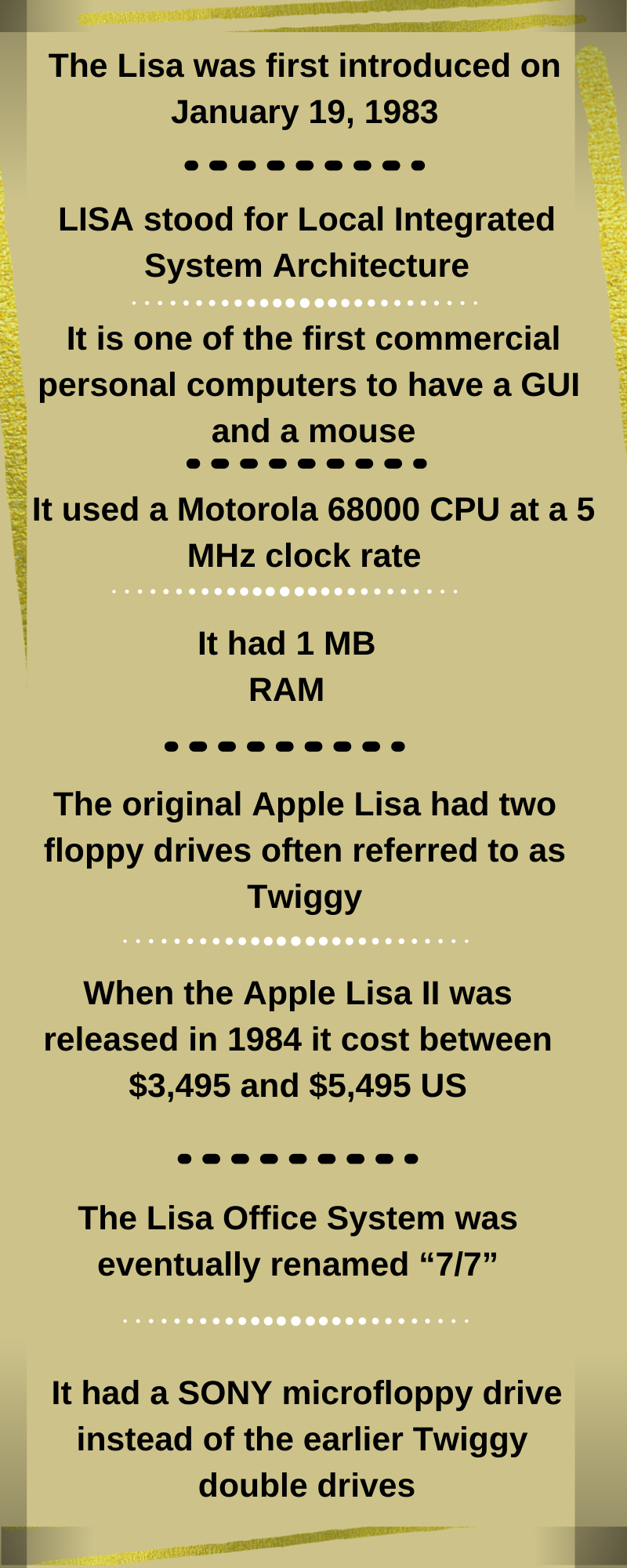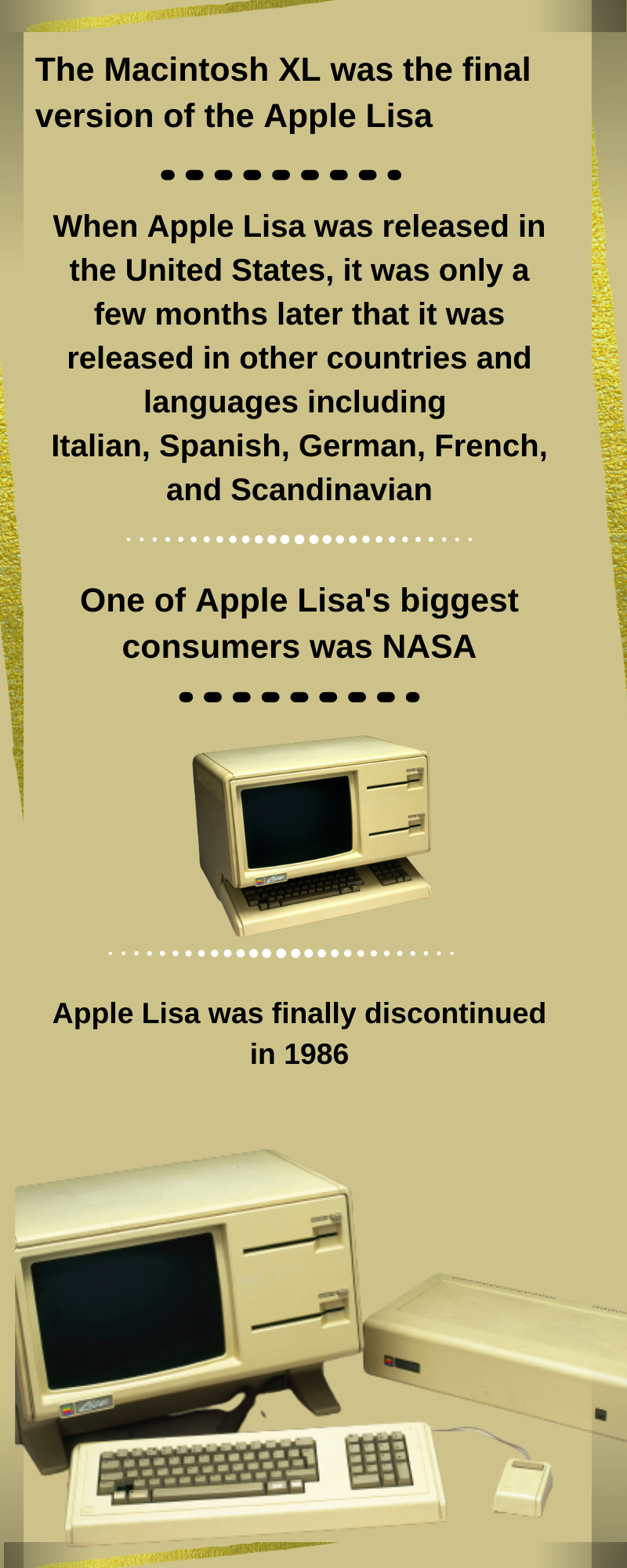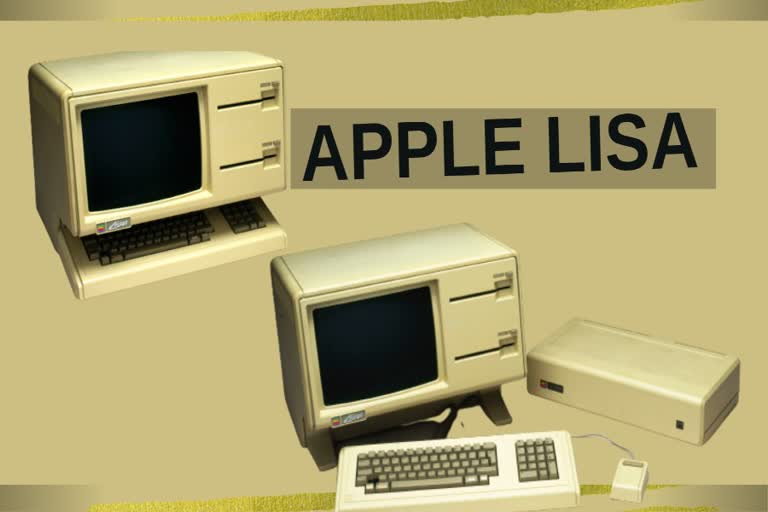Hyderabad: In September 1980, Steve Jobs was forced out of the Lisa project, so he joined the Macintosh project instead. Contrary to popular belief, the Macintosh is not a direct descendant of Lisa, although there are obvious similarities between the systems and the final revision, the Lisa 2/10, was modified and sold as the Macintosh XL. Steve Jobs tweeted about Lisa Computer.
-
The first computer created by Apple. "The Lisa Computer" pic.twitter.com/H4ymMNfktr
— Steve Jobs (@SteveJobsIsu) January 8, 2016 " class="align-text-top noRightClick twitterSection" data="
">The first computer created by Apple. "The Lisa Computer" pic.twitter.com/H4ymMNfktr
— Steve Jobs (@SteveJobsIsu) January 8, 2016The first computer created by Apple. "The Lisa Computer" pic.twitter.com/H4ymMNfktr
— Steve Jobs (@SteveJobsIsu) January 8, 2016
- The Lisa was first introduced on January 19, 1983, at a cost of $9,995 US dollars. ($21,482.26 in 2008 dollars).
- It is one of the first commercial personal computers to have a GUI and a mouse.
- It used a Motorola 68000 CPU at a 5 MHz clock rate and had 1 MB RAM.
- The original Lisa has two Apple FileWare 5¼ inch double-sided floppy disk drives, more commonly known by Apple’s internal code name for the drive, “Twiggy”.
- They have a capacity of approximately 871 kilobytes each but required special diskettes. The drives have the reputation of not being reliable, so the Macintosh, which was originally designed to have a single Twiggy, was revised to use a Sony 400k microfloppy drive in January 1984. An optional external 5 MB or, later, a 10 MB Apple ProFile hard drive (originally designed for the Apple III) was also offered.
- The Lisa operating system features cooperative (non-preemptive) multitasking and virtual memory, then extremely advanced features for a personal computer.
- The use of virtual memory coupled with a fairly slow disk system makes the system performance seem sluggish at times.
- The Lisa Office System is the GUI environment for end-users.
- The Workshop is a program development environment, and is almost entirely text-based, though it uses a GUI text editor.
- The Lisa Office System was eventually renamed “7/7”, in reference to the seven supplied application programs: LisaWrite, LisaCalc, LisaDraw, LisaGraph, LisaProject, LisaList, and LisaTerminal.
Also Read: Stadia players can enjoy Cyberpunk 2077 patch 1.06 update


Key Facts about LISA Computer
- If the Apple Lisa were to be released today at today's prices it would cost almost $25,000 US.
- LISA stood for Local Integrated System Architecture. Because of so much speculation surrounding the true meaning of the acronym, there was a joke that it stood for Let's Invent Some Acronym. Steve Jobs later said it was named after his daughter.
- Steve Jobs was forced to leave the Apple Lisa project in 1980 so he focused on the Macintosh project.
- Some believe that the Mac is a direct descendant of Apple Lisa but was not - the Macintosh XL was the final version of the Apple Lisa.
- The Apple Lisa was one of the very first personal computers released commercially to have a mouse and a GUI. The Apple Lisa's CPU was a Motorola 68000. It had a 5 MHz clock rate and 1 MB of RAM.
- The original Apple Lisa had two floppy drives for 5.25-inch disks. These disk drives were often referred to as Twiggy.
- When the Apple Lisa II was released in 1984 it cost between $3,495 and $5,495 US. It had a SONY microfloppy drive instead of the earlier Twiggy double drives.
- When the Apple Lisa II was released Apple offered to exchange all the Twiggy drives from the Apple Lisa originals for the new 3.5-inch disk drives.
- The Apple Lisa had expansion slots that made it possible to upgrade the CPU.
- The Apple Lisa is considered to be a big failure commercially for Apple. Consumers found the price to be too high and opted for the IBM PCs that were less expensive.
- When the Apple Macintosh was released in 1984 it was marketed much better than the Apple Lisa. It was much less expensive.
- In 1986, Apple made an offer to Lisa/XL owners that they could return their computers and pay $1,498 to receive a Macintosh Plus computer and a Hard Disk. The value of the new system at the time was $4,098 US.
- One of Apple Lisa's biggest consumers was NASA. NASA used LisaProject but had major problems when the Apple Lisa was discontinued as it had been used for project management.
- When Apple Lisa was released in the United States, it was only a few months later that it was released in other countries and languages including Italian, Spanish, German, French, and Scandinavian.
- Apple Lisa was finally discontinued in 1986.

Also Read: Remembering Benjamin Franklin on his birth anniversary



